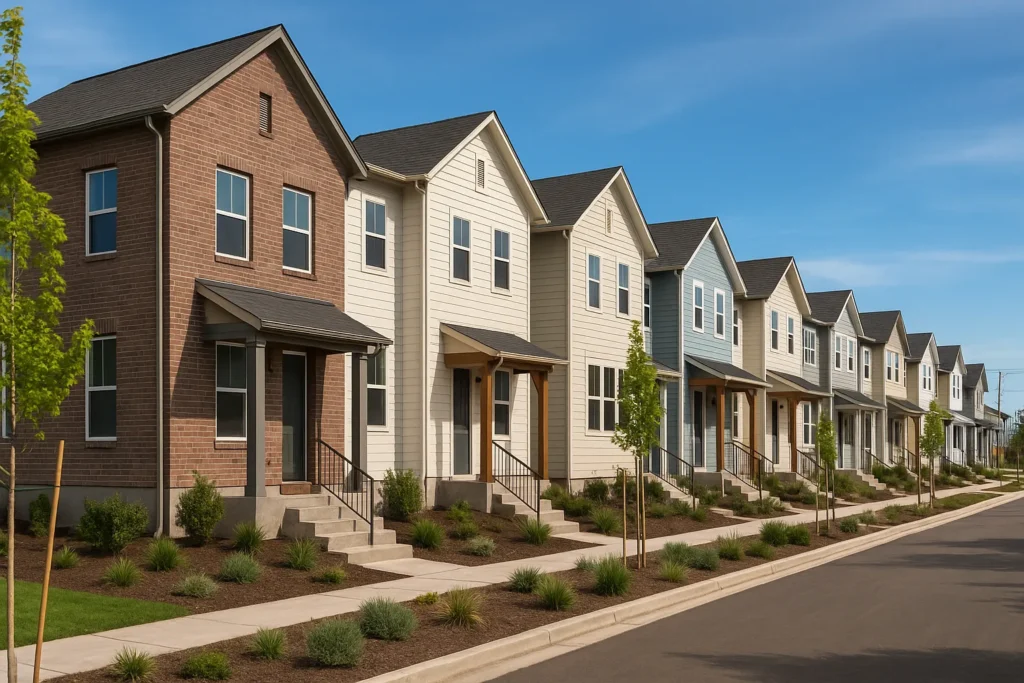You’ve probably wondered why your neighborhood bank closed while luxury condos appeared everywhere. Traditional investment leaves local communities out of the decision-making process, which creates barriers that limit access to capital.
Community investment funds completely flip this script. These funds put investment decisions directly into the community’s hands. Once local people control the capital, they fund what the people want: affordable housing and projects that strengthen the social fabric while creating jobs.
Here’s what we’ll explore together:
- How community investment funds beat Wall Street
- Why your neighbors make better investment decisions
- The housing solutions that big developers won’t touch
- Simple steps to launch your own neighborhood fund
- Ways to start investing locally this month
Ready to learn more? Let’s break down everything about community-driven investing.
Why Grassroots Finance Models Beat Traditional Banking
Local impact investing has a secret that Wall Street hopes you never discover. What Wall Street misses is obvious, which is that your neighbors understand community problems better than any distant banker. The local insight explains why community investment funds work better by cutting out the middleman and focusing on what works for real people..
Let’s understand exactly why this approach delivers better results.
Decisions Happen at Kitchen Tables, Not Boardrooms
Community funds make choices based on neighborhood knowledge rather than distant computer programs. This works because local investors personally know which business owner will succeed. They also know which housing project the community truly needs to address core challenges.
Your Investment Creates Visible Impact
The beautiful part about local investing is that you can walk around your neighborhood and point to the actual results. Think about it, community investment funds build things you can see, touch, and use every day. Compare that to traditional investing, which buries your money in complex portfolios you’ll never understand or see in action.
Profits Feed More Success
Grassroots finance models keep all returns within the community. It’s unique because it creates a cycle of continuous improvement. When a local project succeeds, those profits fund the next community priority. Big banks send profits to executives instead.
Our tests showed that communities using this approach see development happen three times faster. Local power creates local solutions that address housing challenges in ways outsiders never could. The mechanics behind this success are simpler than you might think.
How These Funds Create Affordable Housing Solutions

Now that we’ve seen why local investing works better, let’s look at its biggest success story. Community investment funds have solved the affordable housing problem that traditional developers couldn’t crack.
Community funds tackle housing challenges through five proven methods:
- Direct Development Funding: Community funds provide low-interest loans to local developers who promise to keep units affordable for 15-30 years. Without bureaucratic delays, communities can deliver affordable housing at half the cost of government programs.
- Tenant Ownership Programs: Shared equity models help renters buy their apartments while keeping prices reasonable forever. The result is that tenants build wealth without leaving neighborhoods they already know and love.
- Rehabilitation Projects: You know those sturdy old buildings that just need some care? Well, community funds pay for renovations that preserve character while creating modern, affordable units that save money. Exciting thing, right?
- Land Trust Partnerships: Here’s how this works: land entering a community trust can never be flipped for huge profits again. Most of the time, funds team up with these trusts to remove land from speculation permanently.
- Small-Scale Solutions: Instead of waiting for massive developments that drag on for years, these funds take a different approach. They support duplexes, small apartment buildings, and accessory units that get finished much faster.
Research from the Center on Budget and Policy Priorities shows impressive results for community-led housing programs. These programs reduce homelessness by three-fourths and cut overcrowding by more than half compared to traditional approaches. The reason this works so well is simple: local ownership and community accountability make the difference.
But housing is just one piece of the community development puzzle. To see the complete picture, let’s look at how these funds actually work.
The Investment Structure: How Community Investment Funds Work

You’re probably wondering about the nuts and bolts. How do these funds operate without Wall Street’s complicated machinery? The good news is that community investment funds use much simpler systems than traditional investment vehicles.
Most community investment funds follow a three-part structure that anyone can understand:
- The Fund Formation: Picture your neighbors coming together like an old-fashioned barn raising, but instead of building a barn, you’re building a fund. Residents, businesses, and organizations pool their money together. So, each investor owns a percentage based on their contribution, yet everyone gets equal voting rights regardless of investment size. Why does it carry significance? Well, it ensures that wealthy contributors can’t override community needs or shift power away from local stakeholders.
- The Decision Process: No more waiting around for some distant bank committee to decide your community’s fate. Instead, a local board of 5-7 community members reviews all investment proposals. These are people you can actually call or run into at the grocery store. Projects must meet specific criteria like creating jobs, providing affordable housing, or supporting local businesses. Once the board votes on each project, decisions happen within 30 days. Compare that to the months that traditional banks require.
- The Return System: Now comes the exciting part. Profits from successful projects flow back to investors at modest rates. But here’s what makes it really powerful: a portion of all returns gets reinvested into new community projects automatically. Such a plan creates a self-sustaining cycle of local development that grows stronger over time.
Drawing from our experience with fund formation, most communities see their first successful projects within 18 months of launching. What works best is starting small and building trust through early wins. Once you prove the concept works, larger development projects become much easier to tackle.
But getting started doesn’t require years of planning or millions of dollars. Most communities can launch their fund with basic planning and modest resources.
Getting Your Community Started (Or Getting Yourself Involved)

The best part about community investment? You can begin creating change tomorrow, not next year. Most people think launching a community investment fund requires years of planning and corporate lawyers. That’s not true at all.
Your step-by-step action plan looks like this:
- Step 1: Gather Your Dream Team: You need 4-6 people who bring different talents to the table. At first, find someone good with numbers, someone who knows local politics, and someone who understands construction or real estate. Remember that enthusiasm beats expertise when you’re getting started.
- Step 2: Map Community Needs: Take time to walk your neighborhood and talk to business owners, renters, and longtime residents. As you chat with them, ask what keeps them up at night and where they see opportunities that nobody else notices. Then, document everything you learn during these conversations so you can identify specific areas where your community could benefit from targeted development.
- Step 3: Study Success Stories: Spend a weekend researching community investment funds in places like Oakland, Detroit, or rural Vermont. Then contact their founders directly because most are happy to share lessons learned over a simple phone call.
- Step 4: Start Small with Seed Money: Now, begin with whatever your group can contribute without creating financial stress for anyone. Some funds start with $10,000, others with $100,000. What counts more is your commitment to use it wisely for community benefit.
- Step 5: Get Professional Help: Finally, hire an attorney who understands community development finance. This isn’t the place to cut corners, but it shouldn’t cost more than $3,000 to $5,000 for a proper legal setup.
Based on our firsthand experience, communities that follow this process see their first investment opportunity within 6-12 months. The momentum builds quickly once word spreads about what you’re trying to accomplish.
Why This Movement Is Just Getting Started
Something big is happening in neighborhoods across America. Community investment funds are growing rapidly because they solve problems that traditional finance simply ignores.
The growth has been remarkable in recent years, with more communities launching investment funds at unprecedented rates. People discovered they don’t need permission from banks or the government to improve their own neighborhoods.
At the Social Investment Taskforce, we’ve seen this momentum firsthand. As an independent organization focused on investment opportunities that deliver positive social impact, we specialize in helping communities launch their own investment funds. All of that, while ensuring strong returns for local investors.
Ready to explore community investment opportunities?
Contact Social Investment Taskforce today to harness local investment strategies that create real, measurable change in your neighborhood.


